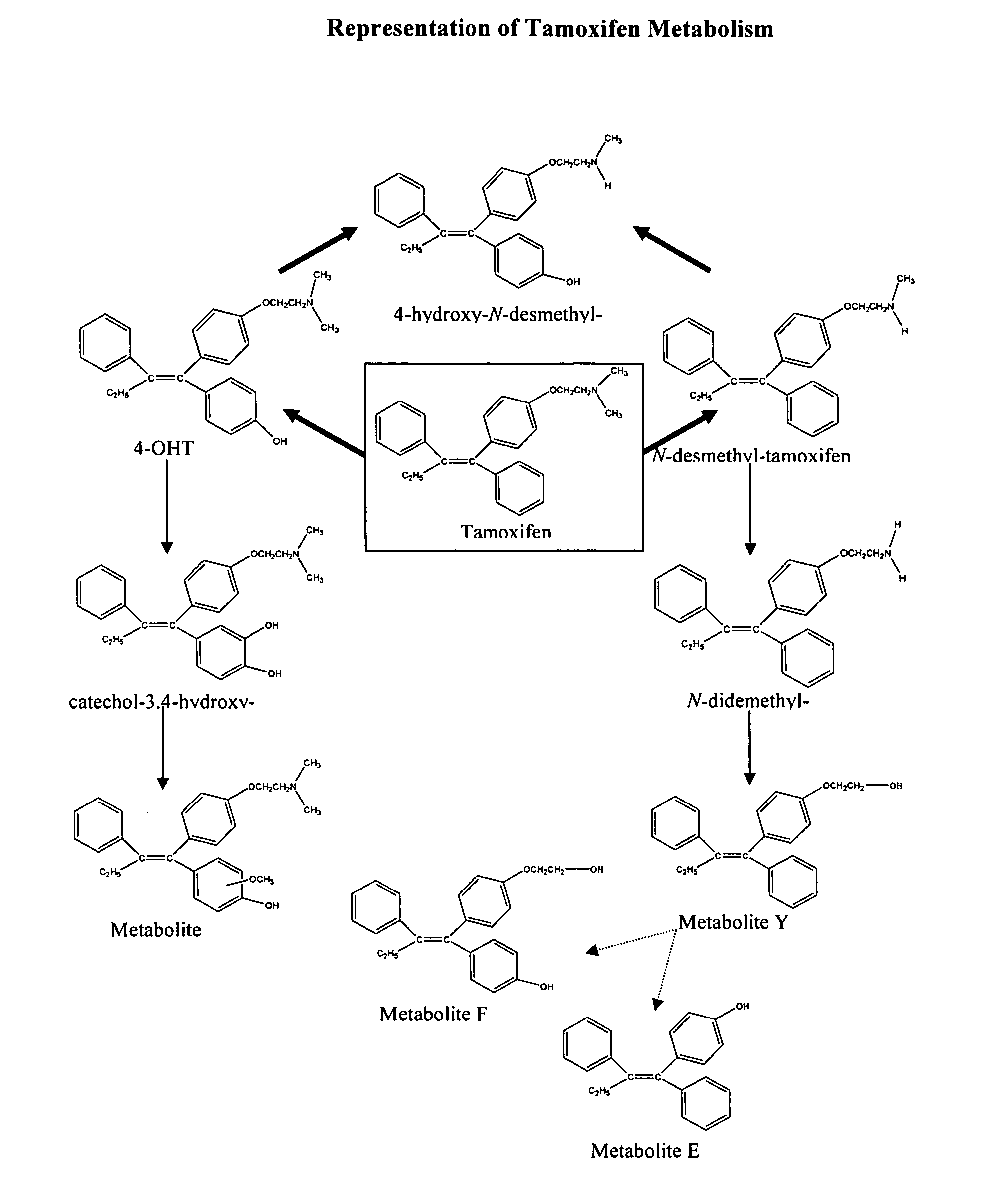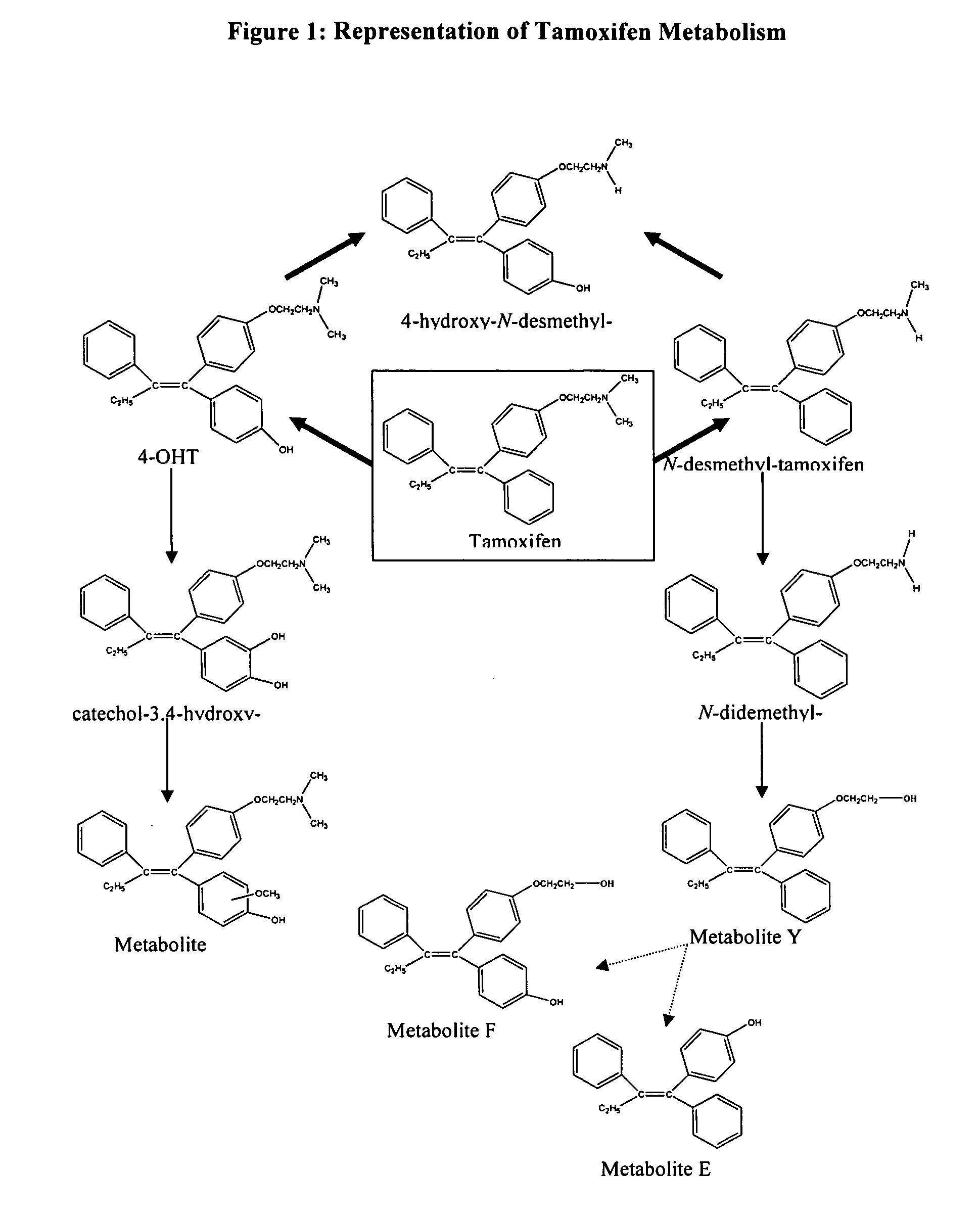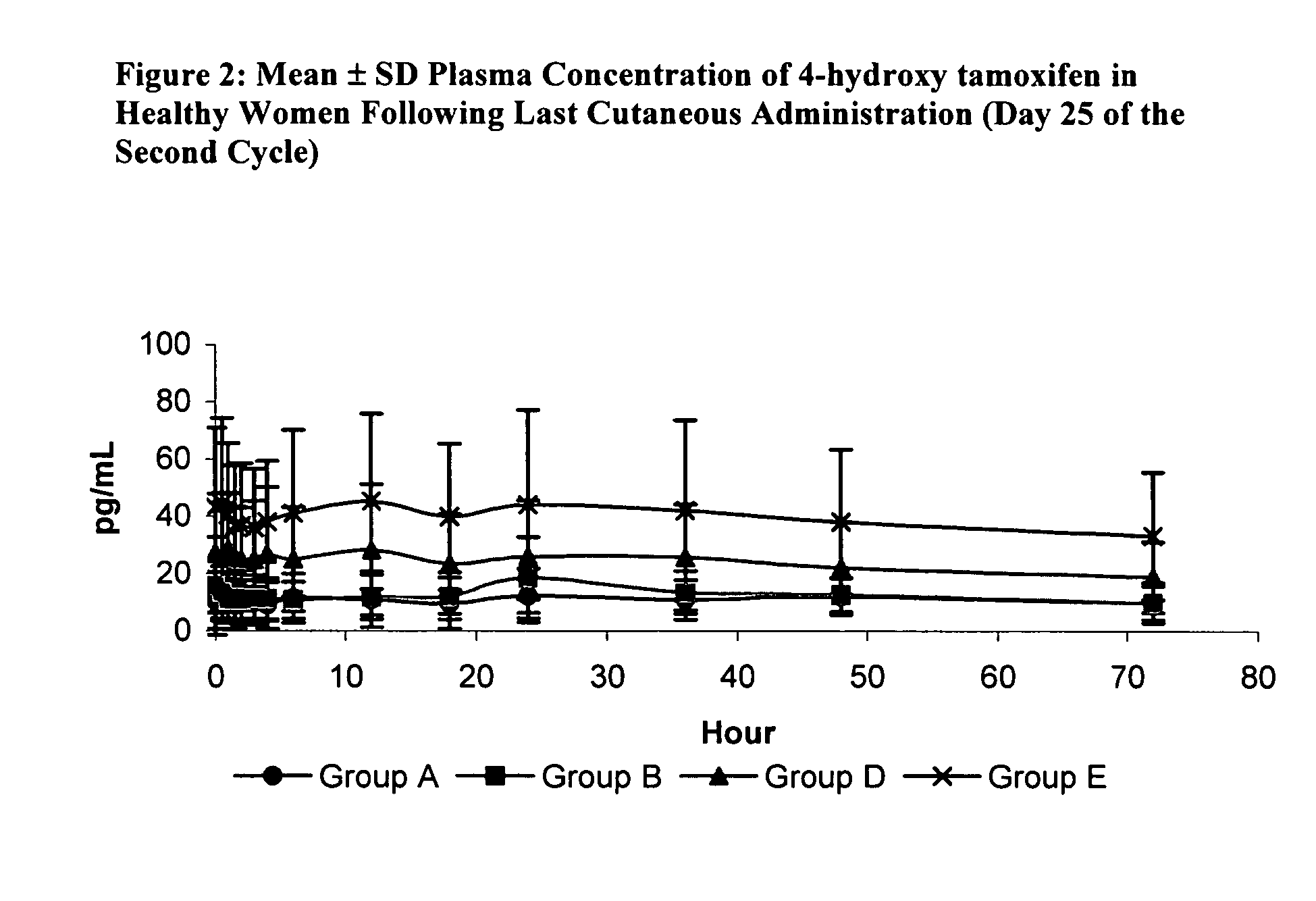Prevention and treatment of breast cancer with 4-hydroxy tamoxifen
a breast cancer and tamoxifen technology, applied in the field of breast cancer prevention and treatment with 4hydroxy tamoxifen, can solve the problems of ineffective treatment, high risk of breast cancer, toxic, and high cost, and achieve the effect of effective reduction of tumor tissue proliferation and lowering plasma drug levels
- Summary
- Abstract
- Description
- Claims
- Application Information
AI Technical Summary
Benefits of technology
Problems solved by technology
Method used
Image
Examples
example 1
Demonstration of Percutaneous 4-Hydroxy Tamoxifen Delivery
Four patients with breast cancer received [3H]-4-hydroxy tamoxifen in an alcoholic solution applied directly to the breasts at specified intervals between 12 hours to 7 days prior to surgery to excise diseased tissue. After surgery, both the excised tissue and the normal breast tissue surrounding the tumor contained radioactivity (Kuttenn et al., 1985).
In a follow-up study, 9 of 12 patients scheduled for surgical excision of hormone-dependent breast cancer received Z-[3H]-4-hydroxy tamoxifen (80 μCi) in a 60% alcoholic solution, and 3 patients received Z-[3H]-tamoxifen (80 μCi) for comparison. The patients received [3H]-labeled drug applied directly on the affected breasts at specified intervals ranging from 12 hours to 7 days before surgery to excise diseased tissue. Breast tissue from three regions: the tumor, tissue immediately surrounding the tumor, and normal tissue, was excised and immediately frozen in liquid nitr...
example 2
Demonstration of the Pharmacokinetics and Pharmacodynamics of Percutaneously Administered 4-OH-Tamoxifen Compared to 20 mg of Oral Tamoxifen
This study compared the tissue and plasma concentrations of 4-hydroxy tamoxifen after percutaneous administration via a hydroalcoholic gel with tissue and plasma concentrations of 4-hydroxy tamoxifen after oral administration of tamoxifen (Pujol, 1995).
Thirty-one patients scheduled for breast cancer surgery were randomly assigned to 1 of 5 groups. They received treatment with either oral tamoxifen or percutaneous 4-hydroxy tamoxifen as outlined in Table 3. Treatment was daily and lasted for 3-4 weeks prior to surgery. The study evaluated three different doses of 4-hydroxy tamoxifen (0.5, 1, or 2 mg / day) and two areas of application (either to both breasts or to a large surface of skin including arms, forearms, and shoulders). One group of patients received 20 mg / day (10 mg b.i.d.) of oral tamoxifen (Nolvaldex®).
TABLE 3Treatment GroupsDose...
example 3
Demonstration of Tolerance and Pharmacokinetics of Percutaneously Administered 4-OH-Tamoxifen in Healthy Women
This study demonstrates the tolerance and pharmacokinetics of topically applied 4-hydroxy tamoxifen gel in healthy premenopausal women, aged 18-45. Each participant applied the gel daily for the duration of two menstrual cycles.
Three doses and two gel concentrations were tested, as summarized in Table 5. For Groups A-C, the gel, containing 20 mg of 4-hydroxy tamoxifen / 100 g, was dispensed from a pressurized dose-metering pump that delivered 0.25 mg of 4-hydroxy tamoxifen / dose. The study of Group C was suspended because the quantity of gel was too large to be applied to a single breast. Groups D and E received a more concentrated gel that contained almost 3 times as much 4-hydroxy tamoxifen: 57 mg of 4-hydroxy tamoxifen / 100 g, or 50 mg of 4-hydroxy tamoxifen / 100 mL of gel. This more concentrated gel also was delivered by a dose-metering pump that supplied 0.25 mg of 4-hy...
PUM
| Property | Measurement | Unit |
|---|---|---|
| Fraction | aaaaa | aaaaa |
| Fraction | aaaaa | aaaaa |
| Fraction | aaaaa | aaaaa |
Abstract
Description
Claims
Application Information
 Login to View More
Login to View More - R&D
- Intellectual Property
- Life Sciences
- Materials
- Tech Scout
- Unparalleled Data Quality
- Higher Quality Content
- 60% Fewer Hallucinations
Browse by: Latest US Patents, China's latest patents, Technical Efficacy Thesaurus, Application Domain, Technology Topic, Popular Technical Reports.
© 2025 PatSnap. All rights reserved.Legal|Privacy policy|Modern Slavery Act Transparency Statement|Sitemap|About US| Contact US: help@patsnap.com



